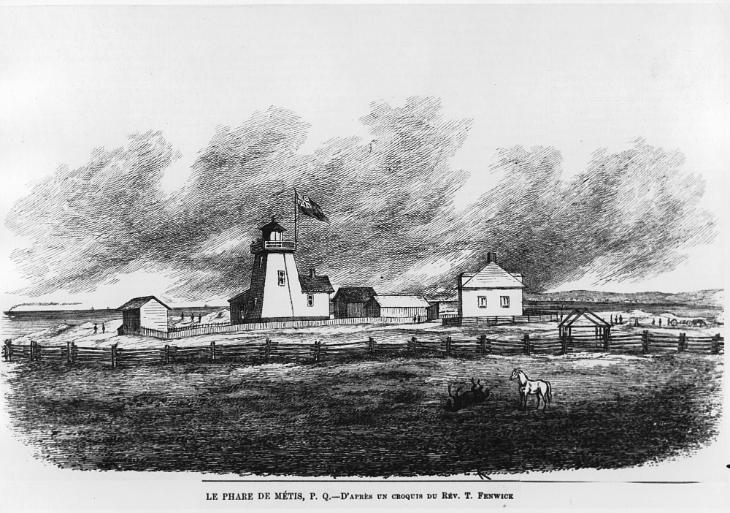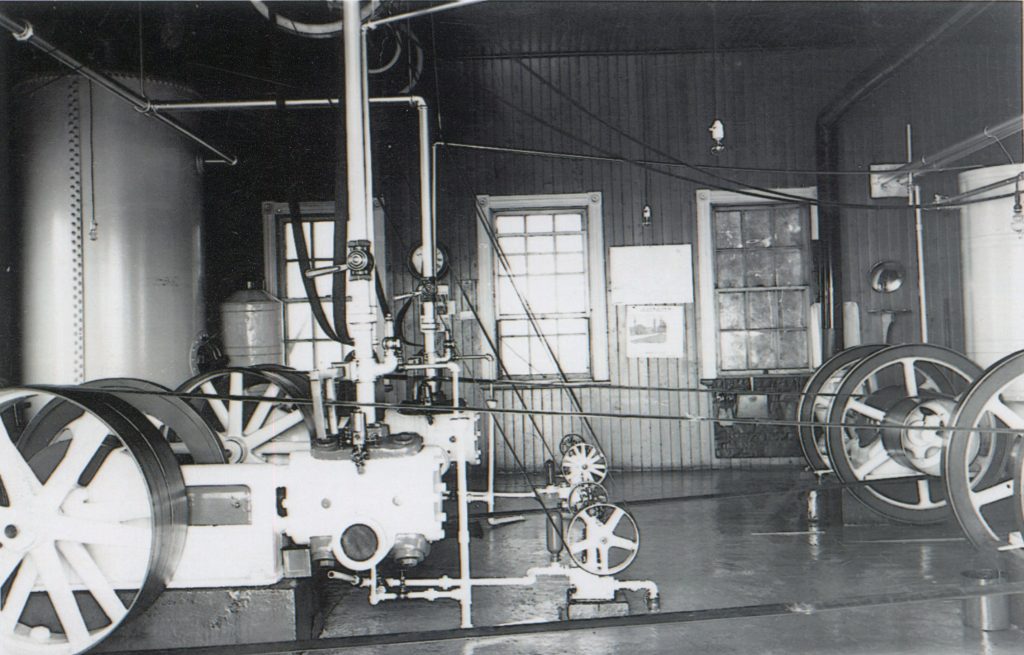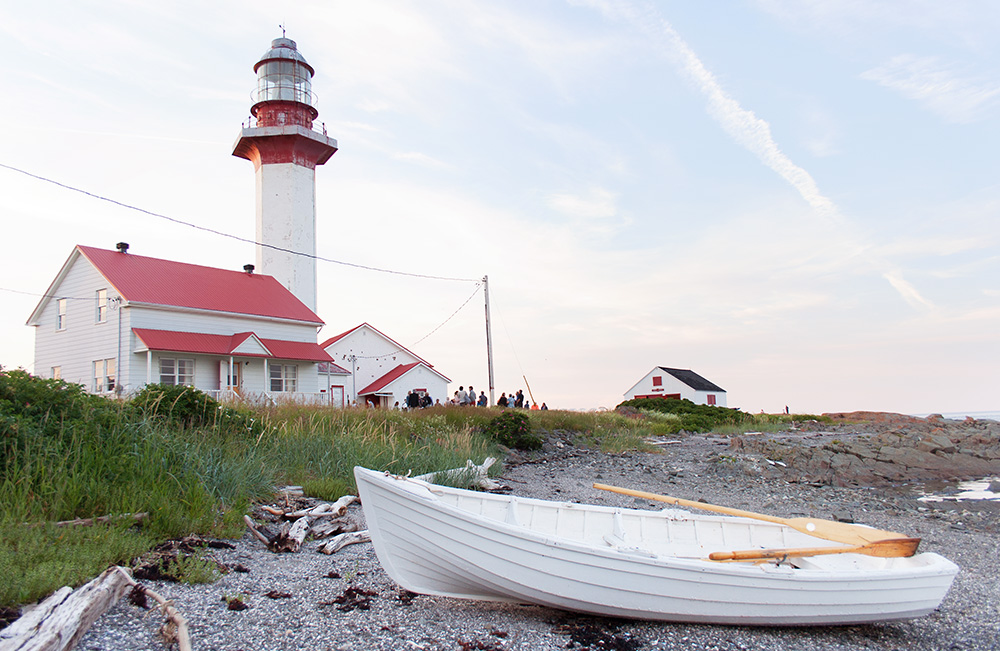The Metis Lighthouse – A Community Icon
Well liked and well documented, the Metis lighthouse is a remarkable symbol of a community with a maritime past and a special interest in heritage preservation. What is so compelling about a lighthouse?

The first lighthouse in Metis was a relatively squat building, standing just 40 feet in height, topped with a light that could be seen for up to 13 miles.
Lighthouse lovers are legion. They are drawn to the unique shape of these buildings and their singular silhouette. Their prominence in the horizontal landscape of the St. Lawrence make them landmarks seen from afar. Their association with the ships and ship captains and decades of maritime lore gives them a powerful symbolism of the world we have lost.

A new lighthouse tower was built in 1909. Much taller than its predecessor, it also had a more powerful light.
The Metis lighthouse has become a visual signature for the region and for many of its organizations, even those barely connected to the community. The lighthouse has a storied history. It was erected after a long battle waged by local leaders and international shippers to reduce the frequency of accidents and shipwrecks. The submerged rocky outcrop had proved to be a fatal obstacle for ships in distress and vessels shrouded in fog. The first lighthouse was completed in 1874 on a point of land that juts northwards into the St. Lawrence.

The foghorn building housed the engines that power the compressed air foghorn that would sound its distinctive horn when fog became a danger for ships.
Even though it has been off limits for most of its history, the lighthouse has long been seen as a community asset. So when the government of Canada finally decided to sell the building and property in 2017, the Ville de Métis-sur-Mer and local residents pulled together to preserve this heritage building. They successfully raised more than $100,000 in donations and pledges to begin its restoration.
No longer useful for navigation, the Metis lighthouse remains a precious monument to the region’s maritime heritage and a remarkable symbol of community cohesion.


